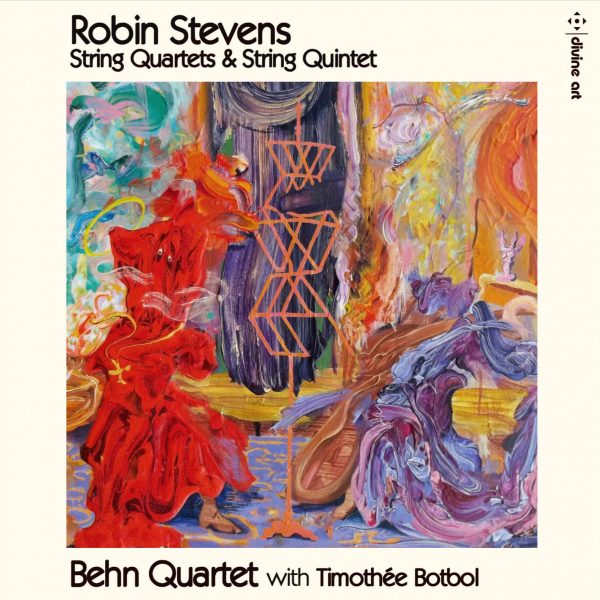British Music Society
The first two Quartets and the String Quintet by Robin Stevens (b. 1958) are performed with energy and clarity by the all-woman Behn Quartet, joined by Swiss cellist Timothée Botbol as additional cellist for the Quintet.
They are named after Aphra Behn, a seventeenth-century writer and feminist activist, and one of the first Englishwomen to earn a living from her writing.
The String Quintet comes first on the CD. It was composed between 1980 and 81 but revised in 2018. The First Quartet was composed in 2008, the second in 2011. All three works are remarkably different but there are certain elements that unify them.
The Quintet lies well within the bounds of tonal English music. It opens with an attractive pastoral melody on cello suggesting folk roots. This tune, and its melodic and harmonic basis, runs through the first movement, although the development section gives a hint of what was to come in the two Quartets.
Its atmosphere is present too in the other movements such as the dance-like Scherzo. This is an unusual movement in that the Trio section is not entirely separate from the scherzo.
The third slow movement has a lyrical feel while the Finale has muscular melodic music. It is more modernist and receives an incisive and precise performance from the players.
The First Quartet is not entirely atonal but lies on the outer reaches of tonality. The performers use less vibrato in their performance. Although it is listed as being in a single movement, there are many contrasting sections, some shorter, some longer, with pauses between them.
Some are scherzo-like, others slower and more lyrical. There are strong contrasts in string texture as well as harmonic against contrapuntal writing.
The Second Quartet is half as long. It has four movements including an eighty-nine second Epilogue. This is the only work with extra-musical inspiration. ‘Impulsive One’ is hard-driven. It opens with a violent ‘scratchy’ chord. ‘God-Seeker’ is slower with ethereal passages. ‘Arguer’ is energetic and dance-like with crucial use of pizzicato.
The CD takes us on a fascinating ride across this composer’s life and musical development.
@divineartrecordingsgroup
A First Inversion Company
Registered Office:
176-178 Pontefract Road, Cudworth, Barnsley S72 8BE
+44 1226 596703
Fort Worth, TX 76110
+1.682.233.4978












